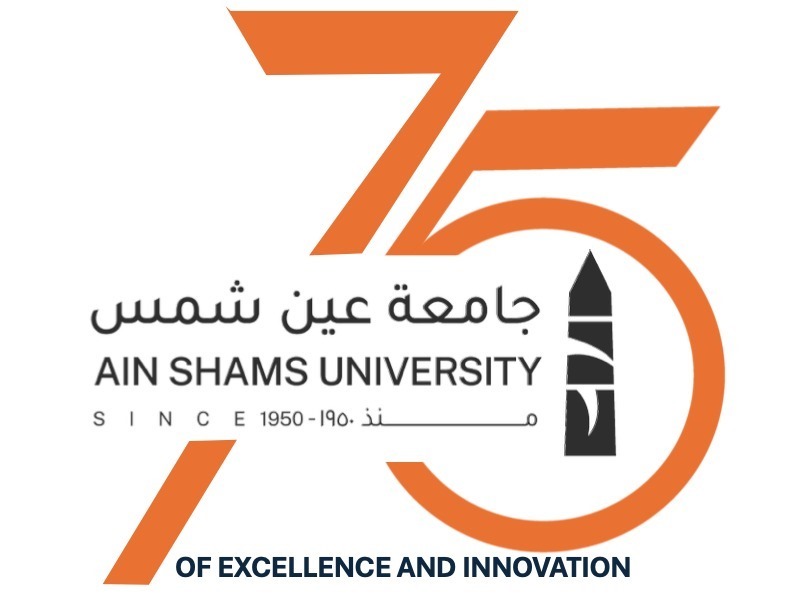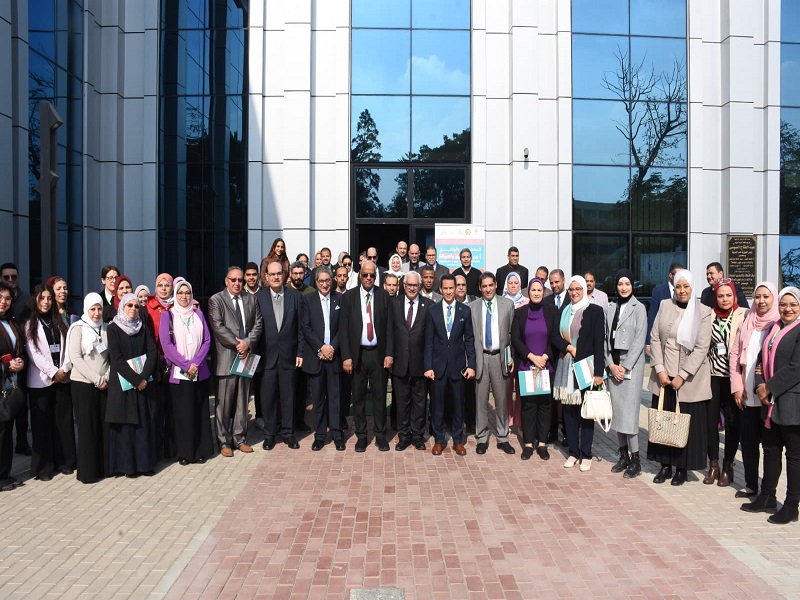The launch of activities of the 12th International Conference of the Center for Papyrological Studies and Epigraphy at the Faculty of Archaeology, under the title "Manuscripts and Documents between Content and Maintenance"
Under the patronage of Prof. Mohamed Diaa Zain El-Abedeen, President of Ain Shams University, Prof. Ghada Farouk, Vice President for Community Service and Environmental Development, and Prof. Hossam Tantawy, Dean of the Faculty of Archaeology, the activities of the 12th International Conference of the Center for Papyrological Studies and Inscriptions at the Faculty of Archaeology were launched in cooperation with the Institute of Arabic Manuscripts affiliated with the ALECSO organization at the League of Arab States, and the Egyptian Geographical Society in Cairo, under the title: (Manuscripts and Documents between Content and Maintenance).
This was attended by Prof. Hossam Tantawy, Dean of the Faculty, Prof. Ali Abdel-Naeem, Director of the Institute of Arabic Manuscripts, Prof. Mohamed Zaki Al-Sedimi, President of the Egyptian Geographical Society, Dr. Basem Mohamed, Acting Vice Dean of the Faculty for Community Service and Environmental Development Affairs, Dr. Iman Nabil, Director of the Center for Papyrological Studies and Inscriptions, and a number of faculty staff, researchers and students.
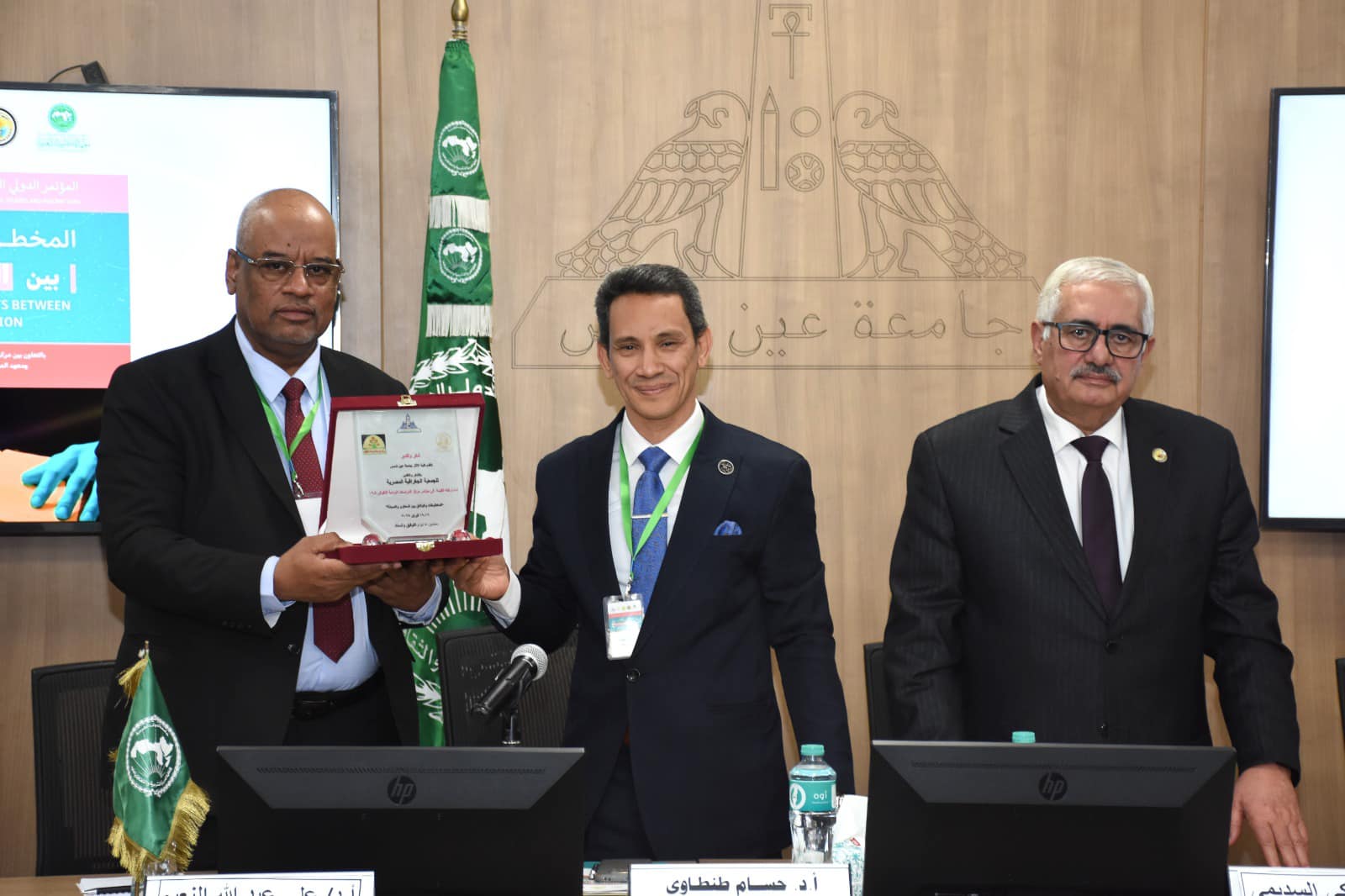 |
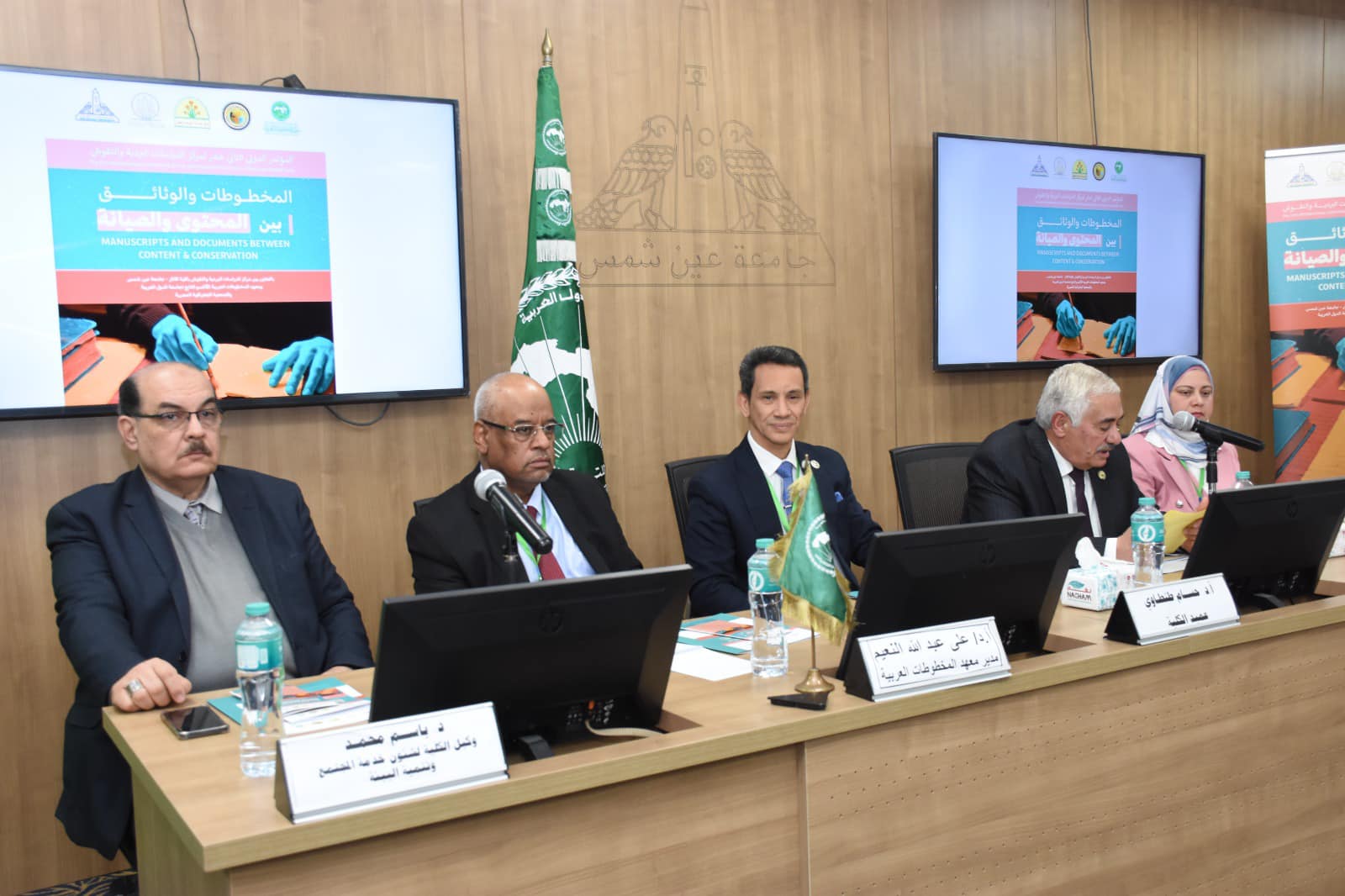 |
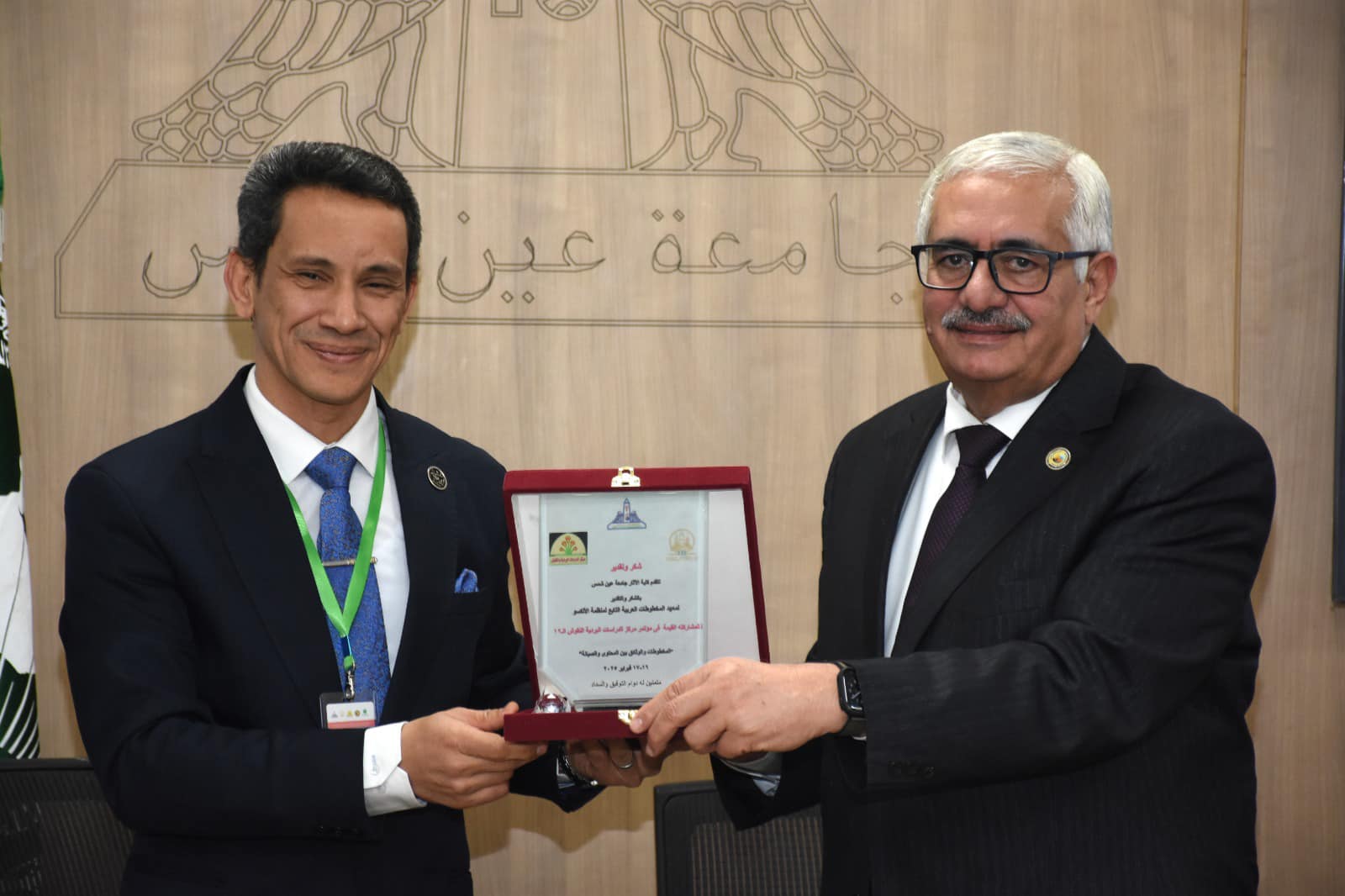 |
||
In his speech, Prof. Hossam Tantawy welcomed the attendees, stressing that the 12th conference of the Center for Papyrological and Epigraphic Studies brings together scientific minds from different specializations to present their in-depth research studies of manuscripts and documents, after everyone has become aware of their important role in the lives of nations and peoples, especially with regard to monitoring the civilizational achievements related to scientific and cognitive aspects, and enabling the current generation and future generations to develop themselves according to a civilizational perspective that realizes the honorable role of their ancestors in the past, a realization that increases their awareness of the importance of their contribution to creating a bright future.
His Excellency also stressed that the conference is in line with the orientations of Ain Shams University and the Faculty of Archaeology towards expanding the building of international and local partnerships, which is reflected in the participation of ALECSO, represented by the Manuscripts Institute of the League of Arab States, and the Egyptian Geographical Society; as active partners in this conference and the distinguished presence of the Egyptian National Library and Archives.
It is also in line with the university's practice of the role assigned to it in preserving and sustaining its heritage holdings through an ambitious project to restore, maintain and digitize the Central Library's collection of manuscripts, books, documents and early publications, which has been assigned to the Faculty of Archaeology since 2021 AD and is still ongoing to this day.
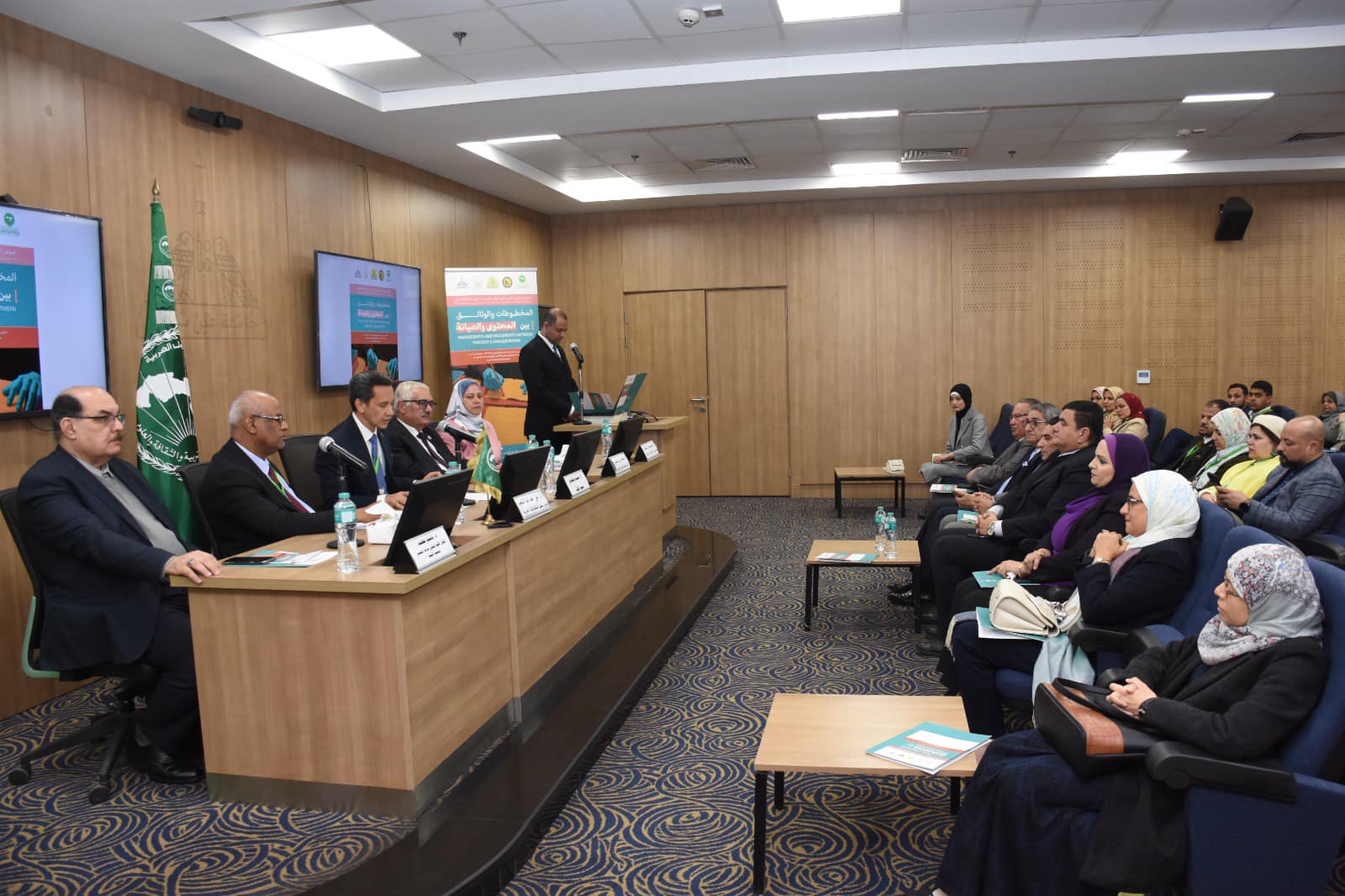 |
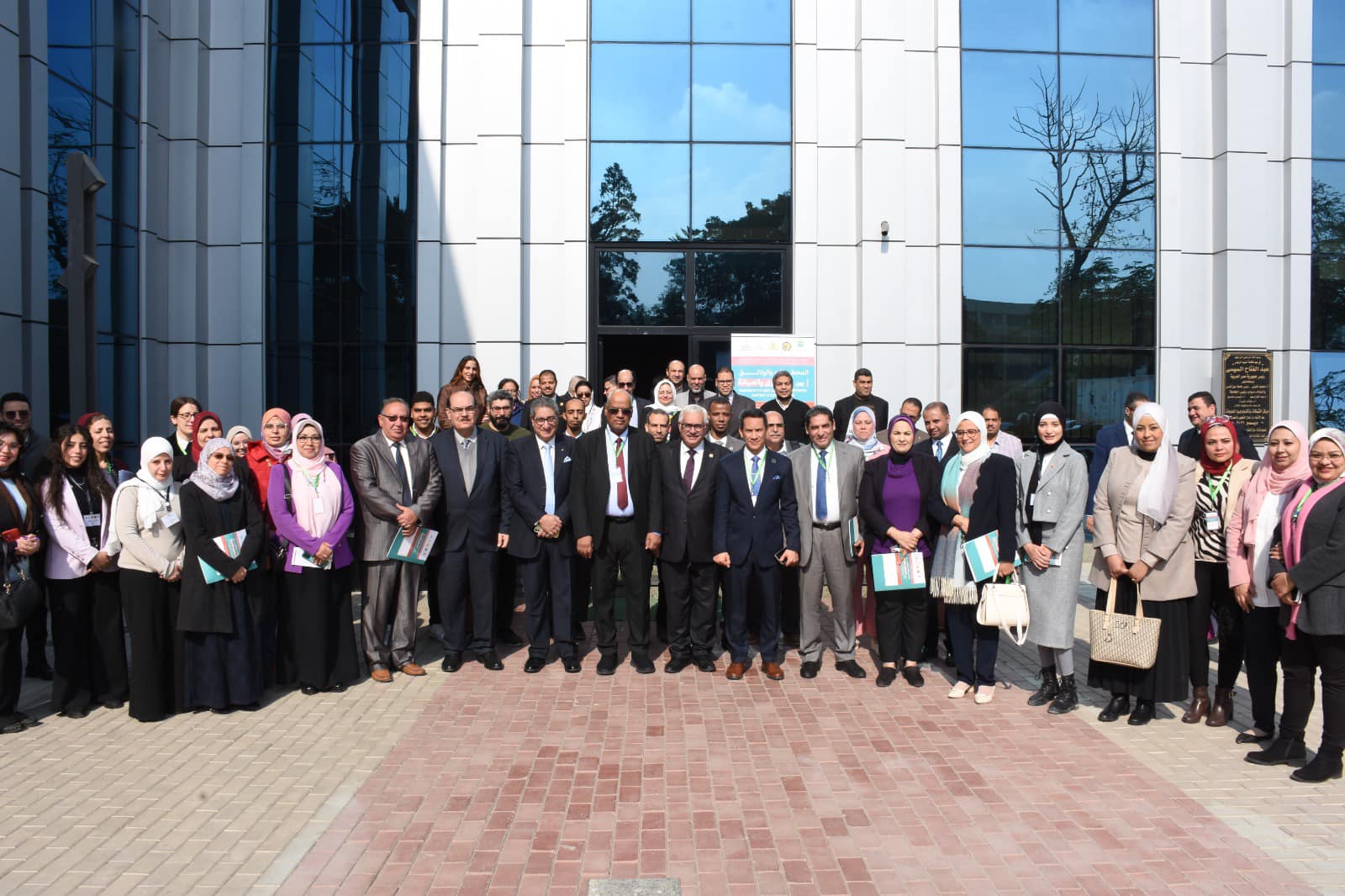 |
Dr. Tantawi added that the conference includes 5 sessions in addition to the opening session, distributed over three main axes that include 34 research papers, during which 37 speakers from Egypt, Morocco, Yemen and Germany will speak, and from various specializations including: history, documents and libraries, geographic information systems, manuscripts, writings, photography, and restoration.
Prof. Ali Abdel-Naeem, Director of the Institute of Arabic Calligraphy, also explained that the cooperation between the Center for Papyrological Studies and Inscriptions at the Faculty of Archaeology aims to preserve manuscripts and documents, noting that the institute has many rare manuscripts that are not found anywhere else in the world, which represents a good reference for researchers, scientists and workers in the field of manuscripts, and it also provides training courses in the field of manuscript sciences, stressing that the institute is ready to cooperate with the Faculty of Archaeology and the Geographical Society to serve Arabic manuscripts.
In his speech, Prof. Mohamed Zaki El-Sedimi, President of the Egyptian Geographical Society, expressed his happiness with the cooperation with the Center for Papyrological Studies and Inscriptions at the Faculty of Archaeology, Ain Shams University, adding that the society includes many holdings and has a simulation museum and a special archaeological museum with many equipment, machines and maps of the Coptic and Islamic world. The society’s museums also contain many antiquities, calling on researchers to visit the society to benefit from these archaeological and historical holdings for research and scientific purposes.
Dr. Basem Mohamed, Acting Vice Dean for Community Service and Environmental Development, explained that the conference activities on its first day will be held at Ain Shams University, and in the halls of the Egyptian Geographical Society on the second day, with the participation of a number of distinguished researchers from different countries.
He added that the research presented at the conference addresses the topics of manuscripts, documents, maintenance and digitization, while highlighting the use of modern technology in preserving and studying manuscripts.
At the end of his speech, His Excellency expressed his hope that this event would yield a distinguished scientific experience with the participation of a group of distinguished researchers and scientists in this field.
In her speech, Dr. Iman Nabil, Director of the Center for Papyrological Studies and Inscriptions, extended her sincere thanks to Prof. Hossam Tantawi, Dean of the Faculty, for choosing the idea of the conference.
She also extended her thanks and appreciation to all those responsible for this excellent work, noting that the idea of the conference emphasizes the importance of documents and manuscripts as one of the most important types of tangible and intangible heritage, as they represent the product of the human mind and the primary source on which various scientific studies and research are based. She stressed that the best way to benefit from this huge scientific wealth is to care for it by studying, investigating and publishing it, as it represents a deposit from present generations to future generations, and preserving it is preserving history and identity.
She pointed out that modern technology has contributed to documenting, digitizing and preserving this cultural heritage and protecting it from extinction, which is what the conference aims to achieve. She explained that more than 37 research papers will be presented at the conference in various aspects of manuscript and document sciences, carefully selected by a specialized scientific committee.
At the end of the opening session, Prof. Hossam Tantawy honored Prof. Ali Abdullah Al-Naeem, Director of the Institute of Arabic Manuscripts at the League of Arab States, for his active efforts in supporting the conference at all levels. He also honored Prof. Mohamed Zaki Al-Sedimi, former Dean of the Faculty of Arts, Tanta University, and President of the Egyptian Geographical Society, for participating in holding and organizing it and opening the doors of the Egyptian Geographical Society, which has a long history, to host its sessions.
His Excellency also expressed his thanks and appreciation to Prof. Osama Talaat, Chairman of the Board of Directors of the Egyptian National Library and Archives, for his support of the events and sessions and participation in an exhibition and research papers by a number of the House’s members. His thanks also extended to all those in charge of the conference and the attendees, including session chairs, researchers and students.
It is worth mentioning that the opening activities of the conference witnessed the contribution of the Egyptian National Library and Archives with an exhibition on pulp paper held on the sidelines with the aim of learning how this paper is produced from natural materials such as cotton and linen, and the stages of preparing it for restoration. The exhibition officials, Ms. Heba Yahya Abdel Latif and Ms. Israa Kamel Abdullah, explained how the paper is cleaned, beaten, dyed and prepared for use in restoration, and they shared with the attendees the equipment of the Restoration, Maintenance and Microfilm Center at the National Library and Archives.
The organizers of the exhibition also confirmed that the purpose of having a laboratory concerned with paper pulp equipment for restoration is to provide the materials and techniques necessary for the restoration of manuscripts and other archaeological materials in a professional manner for researchers and students to use local materials to save imports from abroad.


.svg)
